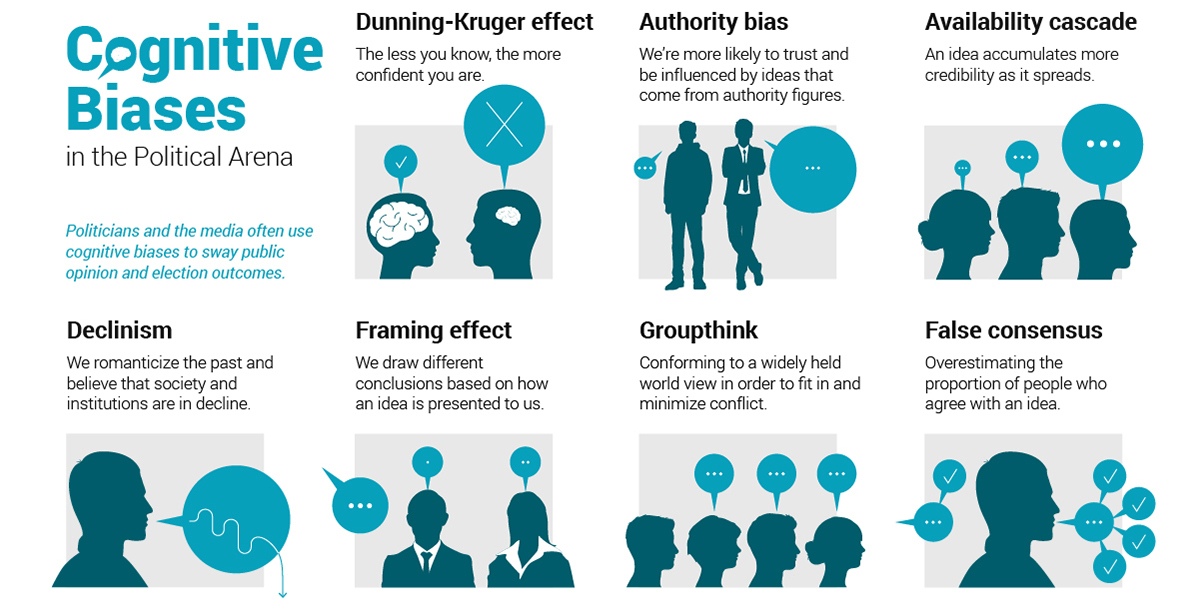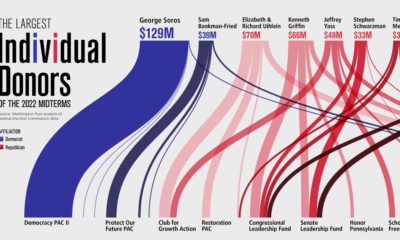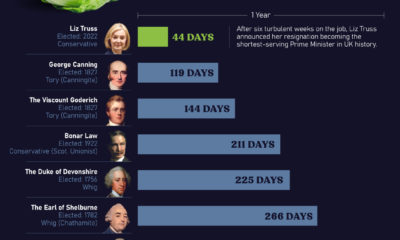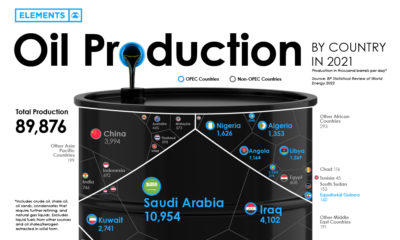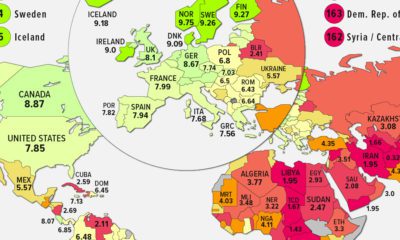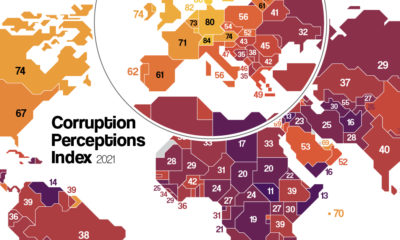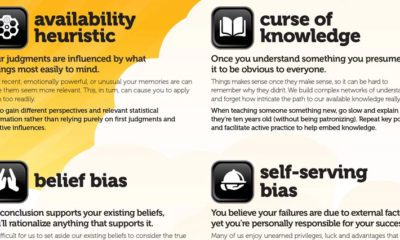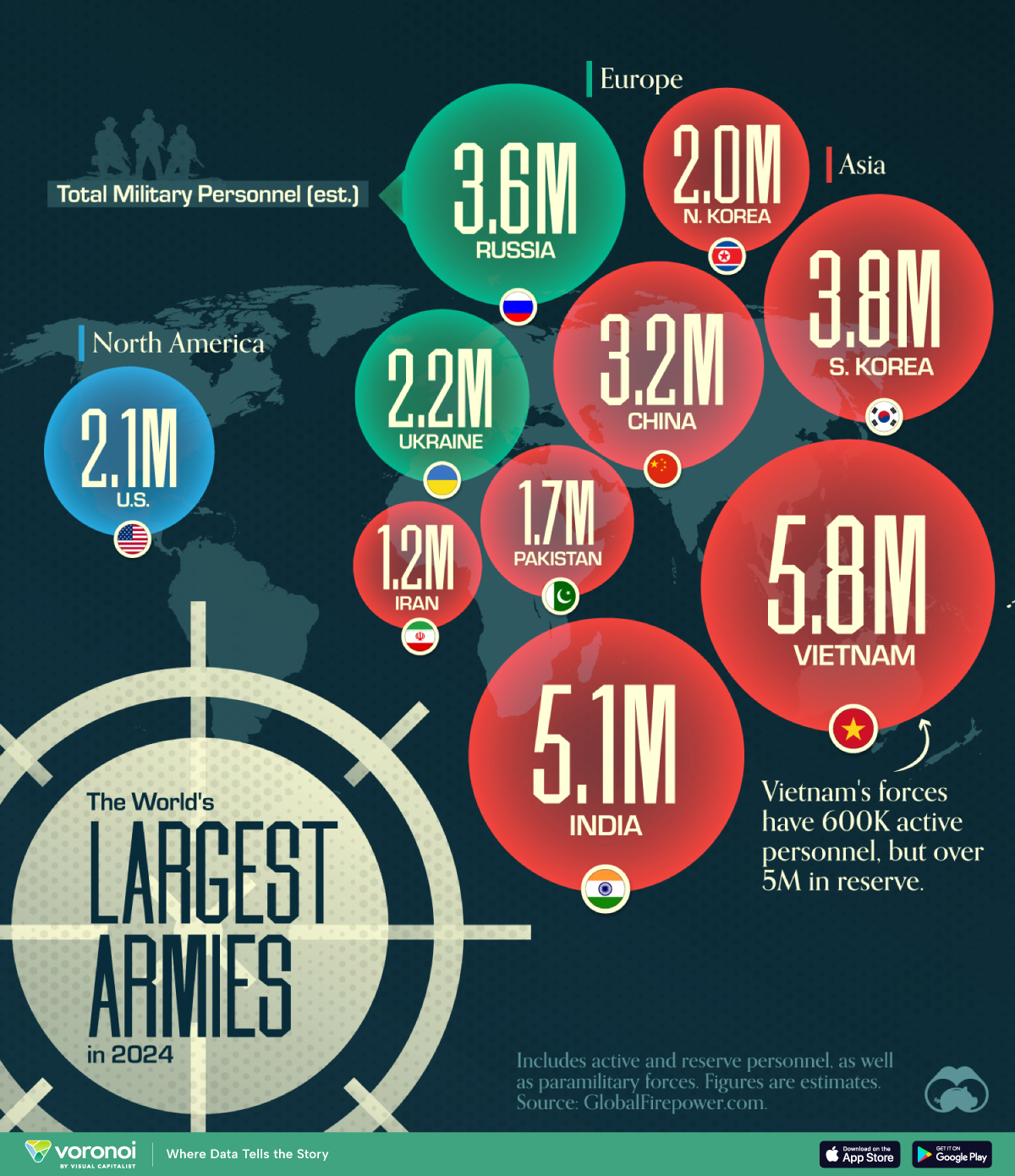Politics
11 Cognitive Biases That Influence Political Outcomes
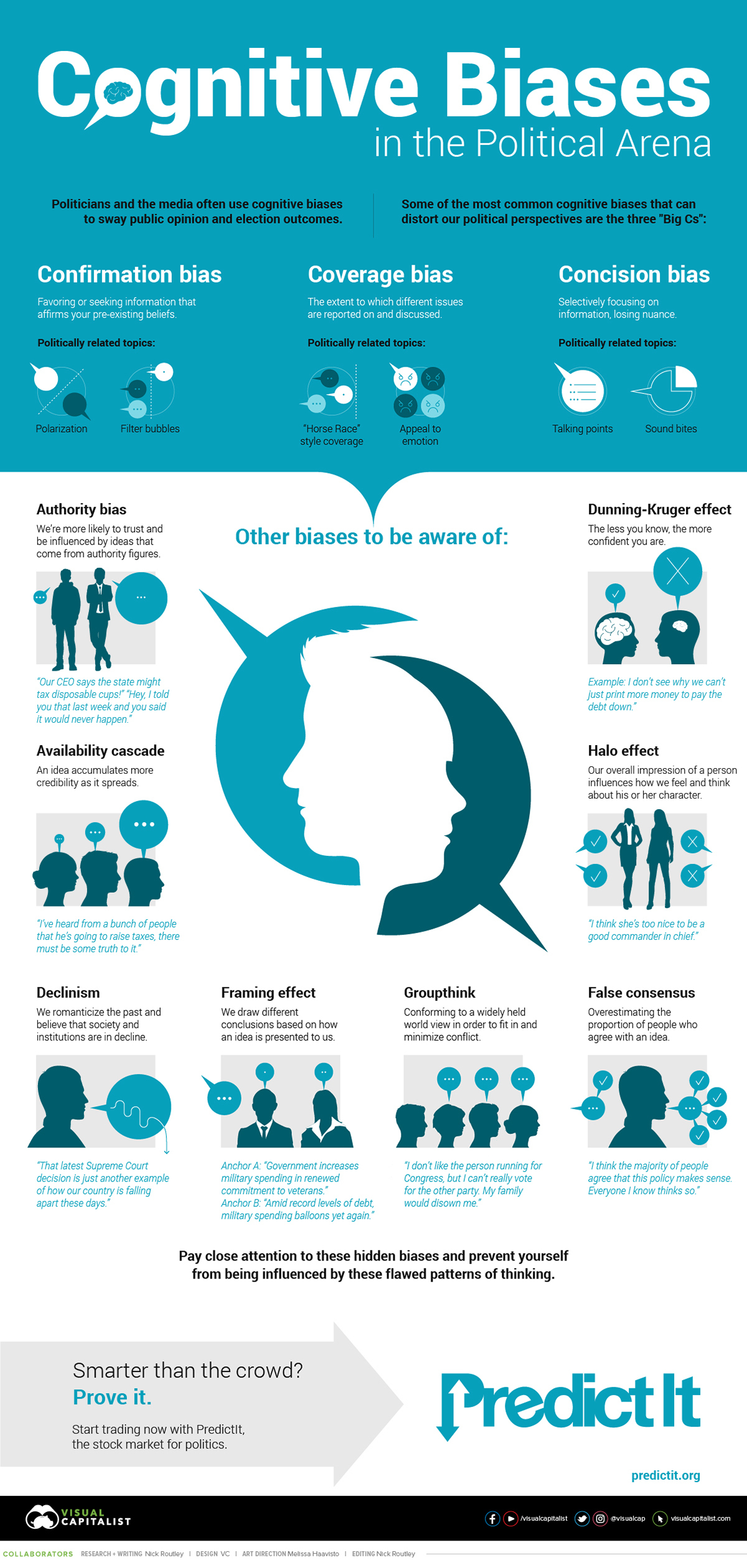
Cognitive Biases in the Political Arena
With the 2020 U.S. presidential election fast approaching, many people will be glued to the 24-hour news cycle to stay up to date on political developments. Yet, when searching for facts, our own cognitive biases often get in the way.
If this isn’t problematic enough, third parties can also take advantage of these biases to influence our thinking. The media, for example, can exploit our tendency to assign stereotypes to others by only providing catchy, surface-level information. Once established in our minds, these generalizations can be tough to shake off.
Such tactics can have a powerful influence on public opinion if applied consistently to a broad audience. To help us avoid these mental pitfalls, today’s infographic from PredictIt lists common cognitive biases that influence the realm of politics, beginning with the “Big Cs”.
The First C: Confirmation Bias
People exhibit confirmation bias when they seek information that only affirms their pre-existing beliefs. This can cause them to become overly rigid in their political opinions, even when presented with conflicting ideas or evidence.
When too many people fall victim to this bias, progress towards solving complex sociopolitical issues is thwarted. That’s because solving these issues in a bipartisan system requires cooperation from both sides of the spectrum.
A reluctance towards establishing a common ground is already widespread in America. According to a 2019 survey, 70% of Democrats believed their party’s leaders should “stand up” to President Trump, even if less gets done in Washington. Conversely, 51% of Republicans believed that Trump should “stand up” to Democrats.
In light of these developments, researchers have conducted studies to determine if the issue of confirmation bias is as prevalent as it seems. In one experiment, participants chose to either support or oppose a given sociopolitical issue. They were then presented with evidence that was conflicting, affirming, or a combination of both.
In all scenarios, participants were most likely to stick with their initial decisions. Of those presented with conflicting evidence, just one in five changed their stance. Furthermore, participants who maintained their initial positions became even more confident in the superiority of their decision—a testament to how influential confirmation bias can be.
The Second C: Coverage Bias
Coverage bias, in the context of politics, is a form of media bias where certain politicians or topics are disproportionately covered. In some cases, media outlets can even twist stories to fit a certain narrative.
For example, research from the University of South Florida analyzed media coverage on President Trump’s 2017 travel ban. It was discovered that primetime media hosts covered the ban through completely different perspectives.
Each host varied drastically in tone, phrasing, and facts of emphasis, […] presenting each issue in a manner that aligns with a specific partisan agenda.
—Josepher, Bryce (2017)
Charting the ideological placement of each source’s audience can help us gain a better understanding of the coverage bias at work. In other words, where do people on the left, middle, and right get their news?
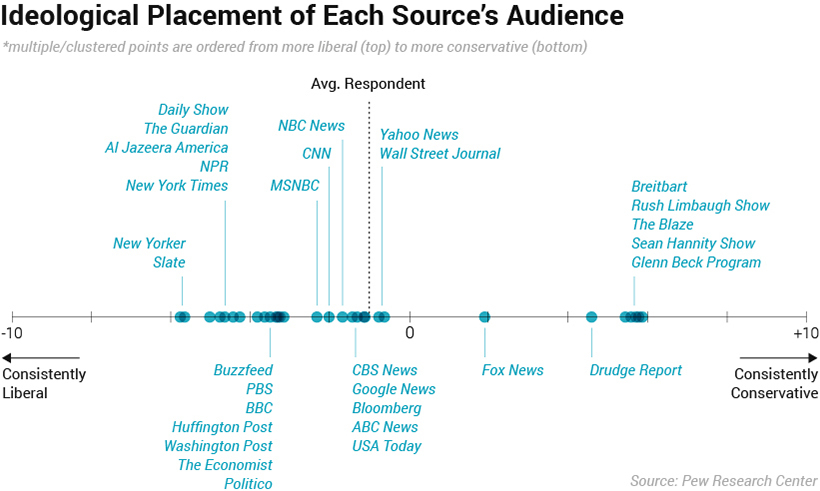
The horizontal axis in this graphic corresponds to the Ideological Consistency Scale, which is composed of 10 questions. For each question, respondents are assigned a “-1” for a liberal response, “+1” for a conservative response, or a “0” for other responses. A summation of these scores places a respondent into one of five categories:
| Ideological Category | Ranking |
|---|---|
| Consistently conservative | +7 to +10 |
| Mostly conservative | +3 to +6 |
| Mixed | -2 to +2 |
| Mostly liberal | -6 to -3 |
| Consistently liberal | -10 to -7 |
Overcoming coverage bias—which dovetails into other biases like confirmation bias—may require us to follow a wider variety of sources, even those we may not initially agree with.
The Third C: Concision Bias
Concision bias is a type of bias where politicians or the media selectively focus on aspects of information that are easy to get across. In the process, more nuanced and delicate views get omitted from popular discourse.
A common application of concision bias is the use of sound bites, which are short clips that can be taken out of a politician’s speech. When played in isolation, these clips may leave out important context for the audience.
Without the proper context, multi-faceted issues can become extremely polarizing, and may be a reason for the growing partisan divide in America. In fact, there is less overlap in the political values of Republicans and Democrats than ever previously measured.
In 1994, just 64% of Republicans were more conservative than the median Democrat. By 2017, that margin had grown considerably, to 95% of Republicans. The same trend can be found on the other end of the spectrum. Whereas 70% of Democrats were more liberal than the median Republican in 1994, this proportion increased to 97% by 2017.
Overcoming Our Biases
Achieving full self-awareness can be difficult, especially when new biases emerge in our constantly evolving world. So where do we begin?
Simply remembering these mental pitfalls exist can be a great start—after all, we can’t fix what we don’t know. Individuals concerned about the upcoming presidential election may find it useful to focus their attention on the Big Cs, as these biases can play a significant role in shaping political beliefs. Maintaining an open mindset and diversifying the media sources we follow are two tactics that may act as a hedge.
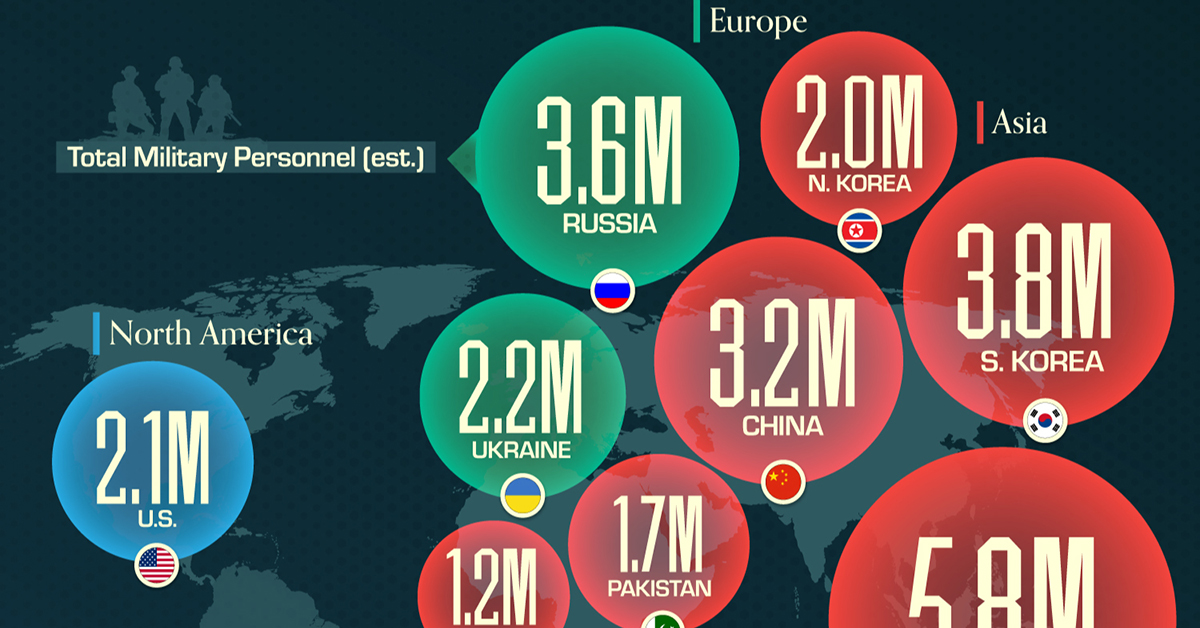
Mapped: The World’s Largest Armies in 2024
This was originally posted on our Voronoi app. Download the app for free on iOS or Android and discover incredible data-driven charts from a variety of trusted sources.
Despite being considered the biggest military force in the world, the United States doesn’t have the largest army in terms of personnel.
This graphic shows the top 10 countries by military personnel as of May 2024, including active and reserve personnel, as well as paramilitary forces. It is based on estimates from GlobalFirepower.com.
Vietnam, India, and South Korea Have the Biggest Armies
China has the largest standing army, with over 2 million active personnel. With increasing defense spending over the last decades, the country also ranks third in the number of tanks and second in the number of aircraft carriers in service.
When reserve personnel are included, however, the Chinese military falls behind those of Vietnam, India, South Korea, and Russia.
Vietnam’s forces include 600,000 active personnel and over 5 million in reserve. This is because Vietnam, along with countries like South Korea and Israel, has a standing policy of conscription for young adults.
| Country | Total Military Personnel (est.) | Region |
|---|---|---|
| 🇻🇳 Vietnam | 5.8M | Asia |
| 🇮🇳 India | 5.1M | Asia |
| 🇰🇷 South Korea | 3.8M | Asia |
| 🇷🇺 Russia | 3.6M | Europe/Asia |
| 🇨🇳 China | 3.2M | Asia |
| 🇺🇦 Ukraine | 2.2M | Europe |
| 🇺🇸 United States | 2.1M | North America |
| 🇰🇵 North Korea | 2.0M | Asia |
| 🇵🇰 Pakistan | 1.7M | Asia |
| 🇮🇷 Iran | 1.2M | Middle East |
Interestingly, the 2022 Russian invasion of Ukraine resulted in a massive increase in Ukrainian personnel numbers. Active personnel rose from around 170,000 in 2016 to over 900,000.
Despite not having the largest army, the U.S. accounts for almost 40% of global military expenditures, with its 2022 spending totaling $877 billion.
China ranked second in absolute terms, accounting for another 13% of world military expenditure at $292 billion.
-
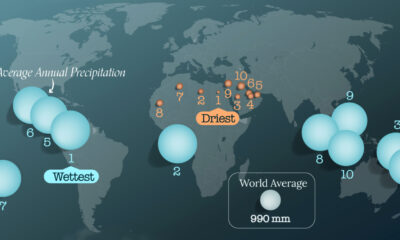
 Maps1 week ago
Maps1 week agoMapped: The World’s Wettest and Driest Countries
-
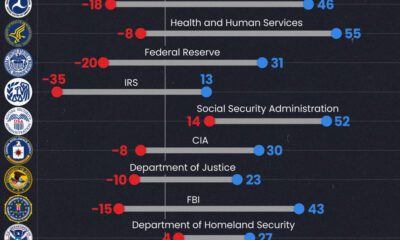
 Public Opinion2 weeks ago
Public Opinion2 weeks agoCharted: How Democrats and Republicans View Government Agencies
-

 Globalization2 weeks ago
Globalization2 weeks agoMapped: The Top Exports in Asian Countries
-
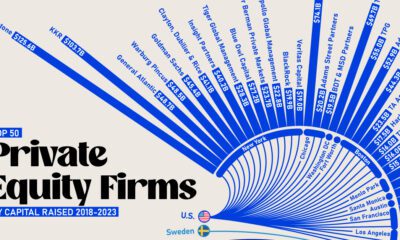
 Finance2 weeks ago
Finance2 weeks agoRanked: The World’s 50 Largest Private Equity Firms
-

 United States2 weeks ago
United States2 weeks agoMapped: The 10 U.S. States With the Lowest Real GDP Growth
-

 China2 weeks ago
China2 weeks agoComparing New and Current U.S. Tariffs on Chinese Imports
-

 Politics2 weeks ago
Politics2 weeks agoWhich Countries Have the Most Economic Influence in Southeast Asia?
-

 population2 weeks ago
population2 weeks agoThe Top 25 Nationalities of U.S. Immigrants

